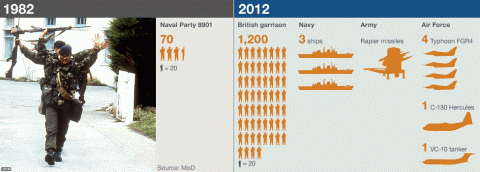Wayne K. Spear explains the ordinary and the extraordinary parts of a military procurement process, as illustrated by the F-35 project:
A straight-shooting bureaucrat will admit that procurement processes are often initiated with the final selection a foregone conclusion. If you know in advance what you need, and you furthermore know who’s most qualified to deliver, then formalities intended to promote transparency and accountability are at best inconveniences to circumnavigate — and every public servant knows well how to steer that ship. That this occurs regularly within the bureaucracy is an open secret.
The Joint Strike Force program, at the centre of which is a proposed purchase of F-35 fighters, introduces disturbing wrinkles to an otherwise unremarkable bureaucratic occurrence. On military matters I refer to the self-described “prolific Ottawa blogger” Mark Collins , who has been training his keen eye on this fiasco for years. At his site you’ll find links to a range of useful resources, for example a DND PowerPoint which makes it clear that military leaders chose the F-35 and only later manufactured the selection criteria. Again, not unusual in procurement. The department however did so on grounds no one has yet admitted, never mind defended. That’s only one of many problems.
Reviewing the Auditor General’s report and the media coverage of this issue, I infer that the F-35 achieved the status of a foregone conclusion for the following reasons. 1) Canada had invested millions of dollars into the F-35 program as early as the 1990s; 2) Lockheed Martin Aeronautics lobbied aggressively, and more effectively, than its rivals (and employed Prospectus Associates, a consultancy firm with the inner track to Defence Minister Peter MacKay); and 3) the F-35 series of fighters — although years from completion and with many important details unclear and ever-changing (including year of completion, engine cost, cost to maintain) — were the only “fifth generation” fighters on the table. As the Auditor General points out, fifth generation “is not a description of an operational requirement.” My own research suggests this phrase means something like ”Ooo!” — which is what I often say when I see a jet fighter in action.
It’s a given that the Royal Canadian Air Force needs to address the rapidly aging CF-18 fleet before 2020 (the estimated end-of-life for the current fighters). The choice had appeared to be simple: follow on our pre-existing development deal with a purchase of F-35 fighters. The problems were that the development schedule had slipped multiple times, the estimated costs had climbed and climbed again, and the technical “teething” issues were still promising longer delays and higher costs. Canada had intended to buy 65 aircraft — in my opinion at least 33% less than the RCAF actually needed — at a “fixed” cost.
The F-35 is still years away from being in service in any air force, there’s no way to be sure that the government’s budget will be enough to buy the minimum number of aircraft, and the CF-18 isn’t getting any younger.
We need (some) new fighter aircraft in the next eight years, but the F-35 is no longer the automatic choice to fill that role.
There’s another root problem, and it’s also to be found in the 2012 federal budget. This document superstitiously relies on the notion that everything the feds do creates jobs. Every spending initiative in the budget creates jobs. Every departmental trim, and every restraint, ditto. Having gone through the budget, I wonder if Mr. Flaherty thinks a job is created when he sneezes. At the same time I was reading the budget, I was reviewing the federal government’s 2010 F-35 sales pitch — which, coincidentally, was the DND’s and Lockheed Martin’s sales pitch. Again, it’s all about “industrial benefits.” Lo and behold: the F-35 program creates jobs!
One name for this line of argument is “Military Keynesianism,” the idea that a brilliant and effective way to create jobs and boost the economy is to give folks like Lockheed Martin billions of dollars of public money. In the 1980s, the American public heard many Pentagon procurement stories concerning $40 staplers and $200 hammers, all part of a federal stimulus effort which by 1988 had tripled the nation’s deficit. There are distinctions to be made between this and the present case. Nonetheless, these staplers and hammers came to my mind as I dug down into the bogus F-35 procurement process and my shovel chipped the Reagan-era bedrock.





